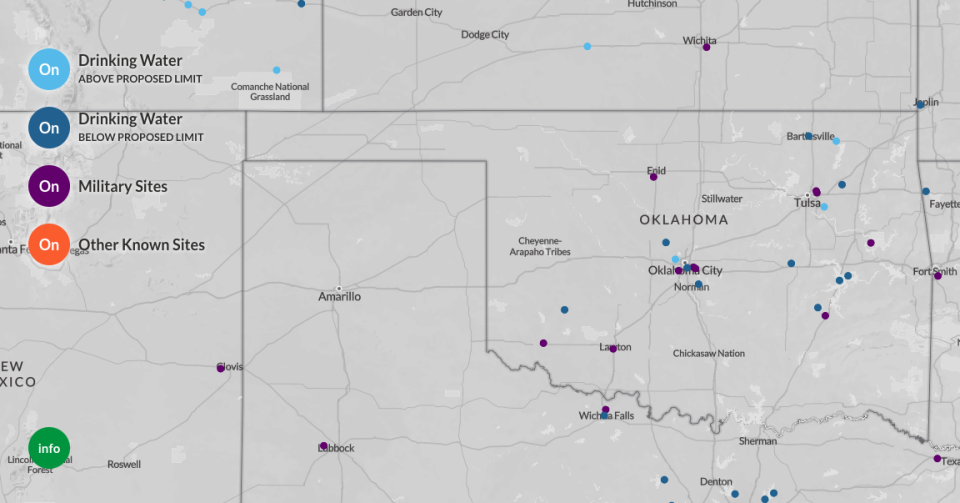Does Oklahoma’s water contain ‘forever chemicals’?

(NEXSTAR) – So-called “forever chemicals” have been found in 45% of the nation’s tap water, according to a recent government study, but is your tap water affected?
If you’re wondering whether or not your tap water might contain synthetic chemicals known as PFAS, nonprofit Environmental Working Group created an interactive map using official records and data from public drinking water systems to show where forever chemicals were found to be above and below the advised maximum concentration level, 4 parts per trillion (PPT).
AT&T, Verizon or T-Mobile? Maps show which is best in Oklahoma
EWG notes that while researchers used the highest quality data available, contamination levels are based on a single point in time and may not reflect changes to the water system or treatment efforts.

Search the map for your own address.
The synthetic compounds known collectively as PFAS are contaminating drinking water to varying extents in large cities and small towns — and in private wells and public systems, the U.S. Geological Survey said in July.
Looking around Oklahoma, some of the sample sites where PFAS were above the proposed limit in drinking water were in Bethany, Broken Arrow and Nowata.
In Bethany, when the water was tested in 2015, a very high 103 PPT was found. Shellie Chard, the Director of the Water Quality Division at the Oklahoma Department of Environmental Quality, told KOSU the site where those forever chemicals were found was an old military site. After the discovery, Chard said the city stopped using the well that was contaminated.
Bethany sues companies over contaminated water
Some other sample sites around the country where the USGS found PFAS above 65 PPT were located in or near Ocala, Florida; Lake Carmel, New York; Mashpee, New York; Hastings, Minnesota; Woodbury, Minnesota; Ramsey, Minnesota; Isabel, South Dakota; Boulder, Colorado; and Galena, Alaska.
The USGS said most PFAS exposure was found near urban areas and potential chemical sources, with higher counts in the following regions: Great Plains, Great Lakes, Eastern Seaboard and Central/Southern/California.
What are PFAS?
PFAS is an umbrella term for thousands of chemicals that are used to make nonstick pans, food packaging, fire-fighting foams, to-go boxes, furniture, rugs, clothing and more. The chemicals are so ubiquitous it would be nearly impossible for most Americans to rid their home of them.
The chemicals are both extremely common and potentially dangerous.
Described as “forever chemicals” because they don’t degrade naturally in the environment, PFAS have been linked to a variety of health problems, including liver and immune-system damage and some cancers.
Studies of lab animals have found potential links between PFAS chemicals and some cancers, including kidney and testicular, plus issues such as high blood pressure and low birth weight.
The U.S. Environmental Protection Agency in March proposed the first federal drinking water limits on six forms of PFAS, or per- and polyfluorinated substances, which remain in the human body for years and don’t degrade in the environment. A final decision is expected later this year or in 2024.
The Associated Press contributed to this report.
For the latest news, weather, sports, and streaming video, head to KFOR.com Oklahoma City.
